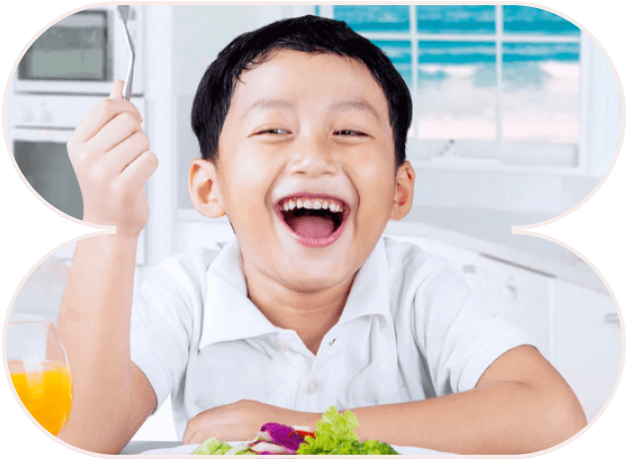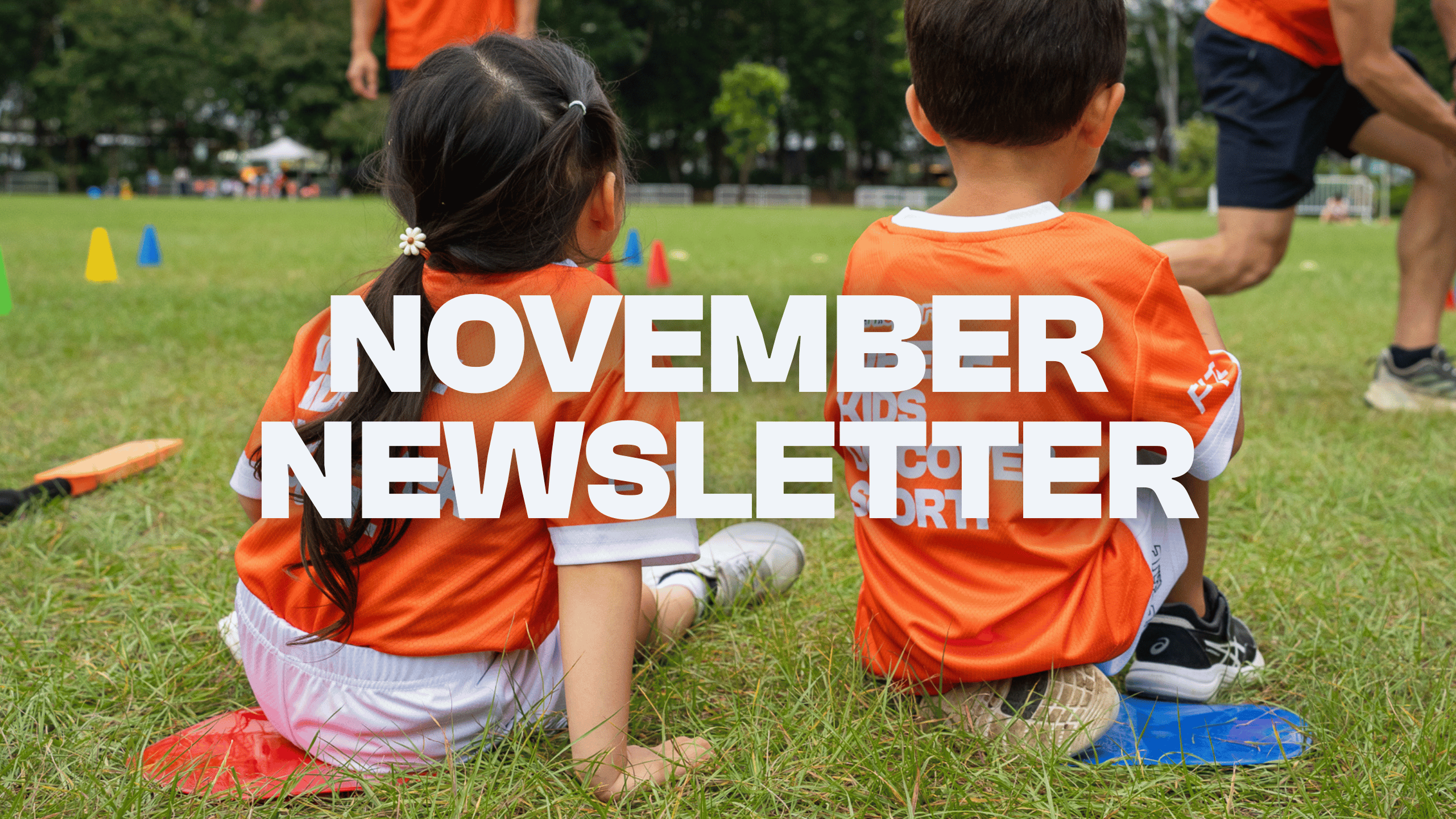.png)


Starting January 1, 2026, we’re replacing credits with Makeup Tokens—a simpler, fairer way to make up missed classes.
Read more




Discover the benefits of yoga and mindfulness for kids with our guide on poses, meditation, and fun activities to enhance focus, balance, and calm in children.
Welcome to the enriching journey of kids' yoga and mindfulness, an enlightening path filled with the joys of self-discovery and the calm of inner peace. In the fast-paced digital age, where children face increasing pressures, yoga and mindfulness stand out as beacons of relief and balance. Let's delve deeper into how embracing these practices can be a game-changer for your child's well-being.
The delicate world of childhood is no stranger to the clutches of stress and anxiety. The American Psychological Association's recent studies paint a concerning picture, with almost one-third of children suffering from stress-related symptoms due to academic and social pressures (1). These findings underscore the need for effective coping mechanisms like yoga and mindfulness.
Mindfulness for kids is about embracing the present moment with open-hearted curiosity. Yoga for children translates this mindfulness into a symphony of movements, creating harmony between body and mind.
Children's yoga cultivates strength, balance, and flexibility, essential for healthy development. It lays the foundation for an active lifestyle and instills an appreciation for what their bodies can achieve.
Mindfulness for kids sharpens focus and strengthens attention, similar to how physical exercise builds muscles. Yoga encourages self-esteem and body positivity, creating a positive self-image. The American Academy of Pediatrics highlights these practices for their stress-reducing and anxiety-alleviating effects (2).
Let's explore some yoga poses, perfect for young yogis:

Stand tall and imagine you're a tree with roots growing from your feet. Balance on one leg, placing the other foot on your ankle or thigh (avoid the knee). Reach your arms overhead like branches stretching to the sun. Benefits: Enhances balance, focus, and concentration.

Sit on your heels and press your palms against your knees. Inhale deeply, then exhale with a strong "roar," sticking your tongue out. Repeat a few times to release tension and energize the body.
Benefits: Relieves stress and improves respiratory control.

Sit down and bring the soles of your feet together, knees out to the sides. Flap your knees gently like butterfly wings. Lean forward for a deeper stretch.
Benefits: Opens the hips and improves flexibility.

Have your child stand with legs apart, one foot angled out.
They bend the knee of the angled foot, stretching their arms out parallel to the ground.
Hold the pose and breathe, feeling strong and brave.
Benefits: Builds lower body strength and instills confidence.

Encourage your child to stand on one leg, bend the other knee, and hold the inside of the foot with the same-side hand.
Ask them to stretch the other hand forward and push their foot into their hand to create a beautiful arch.
Benefits: Improves balance and stretches the chest and legs.

Your child kneels on the floor, sits on their heels, then bends forward, resting their forehead on the ground and arms alongside the body.
They relax into the pose, feeling a gentle stretch along the back.
Benefits: Offers a sense of security and calm, gently stretching the back and hips.
Yoga for children should be an adventure filled with exploration and joy. Incorporating imaginative stories that align with poses can captivate their interest. Consistency is key; thus, a brief daily practice can be more beneficial than sporadic longer sessions.
Imagine your belly is a balloon, inflating as you breathe in, and deflating as you breathe out. Practice "bumblebee breaths" by exhaling with a buzzing sound.
Benefits: Promotes relaxation and emotional regulation.
Create a story where children imagine floating on a cloud or walking through a forest, engaging their senses in the journey.
Benefits: Enhances imagination and provides mental calmness.
Practice eating a fruit slowly, savoring each bite, or walking with attention to each step.
Benefits: Cultivates presence and appreciation for the moment.
Invite your child to explore the outdoors, paying attention to the different types of plants, the texture of the bark, or the sound of leaves underfoot.
Benefits: Enhances sensory awareness and appreciation for nature.
Set aside time for your child to colour mindfully, focusing on the sensations and choices in the moment.
Benefits: Encourages creativity and present-moment awareness.

Meditation offers kids a chance to experience stillness in the ever-moving stream of life. Introducing them to simple practices like "counting breaths" or "heartbeat meditation" provides them with tools for emotional regulation and stress management.
Creating a nurturing space for practice is essential. Here are some tips for parents:
Expanding on scientific support, studies have found that school-based yoga programs significantly improve students' emotional and psychosocial quality of life. Research also indicates that children who practice mindfulness exhibit higher levels of attention in school, potentially leading to better academic outcomes (3).
Parents might encounter resistance or inconsistency when introducing these practices. Address these by making sessions fun and dynamic, using yoga cards or story-based sessions. Remain patient and open to your child's feedback, and adapt as needed.
Monday: Start with simple breathing exercises and a morning Sun Salutation sequence.
Tuesday: Practice the Tree Pose and spend time in nature, engaging in mindful observation.
Wednesday: Introduce the Warrior Pose and a "heartbeat meditation" after.
Thursday: Try the Dancer Pose and follow it with a creative activity like mindful colouring.
Friday: Wind down the week with the Child's Pose and a guided relaxation meditation.

By enhancing focus and emotional regulation, yoga and mindfulness directly impact learning. Children who engage in these practices may find it easier to navigate the complexities of their educational environments with greater ease and confidence.
For toddlers, yoga and mindfulness can mean enhanced motor development and early emotional regulation. School-aged children benefit from improved concentration and self-esteem, while teenagers may experience decreased anxiety and better stress management.
Incorporating the practices of yoga and mindfulness in childhood can sow the seeds for a balanced and resilient future. With each mindful breath and each yoga pose, your child is building a toolbox for life's challenges. It's not just about bending and stretching; it's about growing and flourishing in mind, body, and spirit.
The best age is around 3, as children start to better manage their bodies and understand instructions. It's also the time when they begin to enjoy group activities, making it ideal for group yoga sessions.
Absolutely. Yoga and mindfulness can be highly beneficial, enhancing body awareness, focus, and emotional regulation. It's vital to tailor the activities to each child's capabilities and needs for maximum benefit.
The risks are minimal, especially when practiced under guidance. Always ensure exercises are age-appropriate and observe safety precautions.
Start with sessions as short as 5-10 minutes for young children, gradually increasing as they grow older and their attention span increases.
"Headspace for Kids" and "Cosmic Kids Yoga" offer excellent content tailored for young audiences. "I Am Yoga" by Susan Verde is a fantastic book to start with for offline practices.
By embracing the peace and strength offered by yoga and mindfulness, we can guide our children toward a future filled with balance and wellness. Let's help them build a foundation that will support them for years to come.


.png)




